Features and cultivation of the Tatar maple
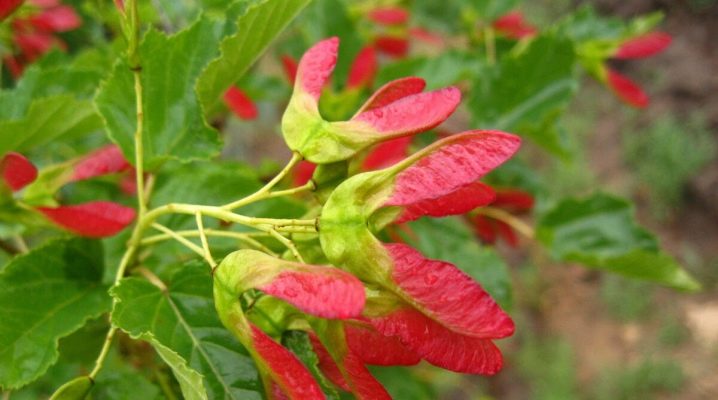
Any gardener is capable of growing unpretentious Tatar maple. The culture does not require much maintenance and is doing well in most regions of Russia.
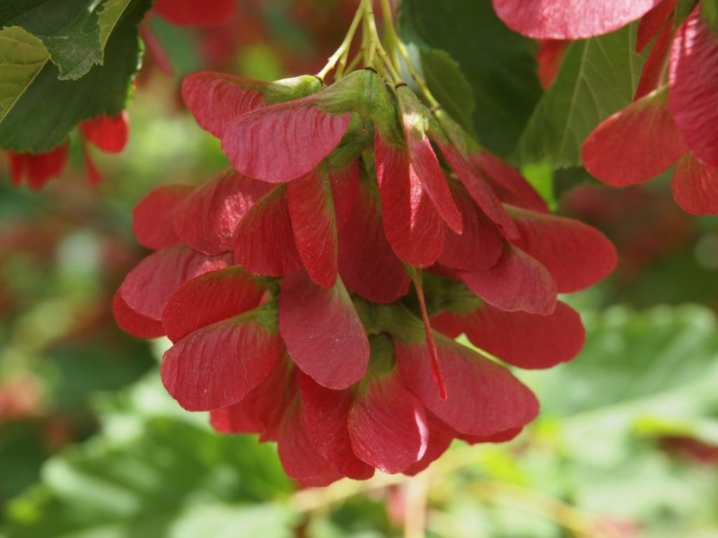
Description
The Tatar maple has several names: the plant is also known as blackened, neklen and ginnala. The culture looks like a small tree or shrub, the stems of which grow up to 2-12 meters. The rather thin bark of a gray-brown or almost black shade at first grows smooth and with small grooves, and then becomes covered with cracks. Graceful reddish ribbed branches may be slightly pubescent. The short and wide, almost spherical buds of the plant also have a rich hue, which is a mixture of red and brown. Their dimensions reach 4 millimeters.
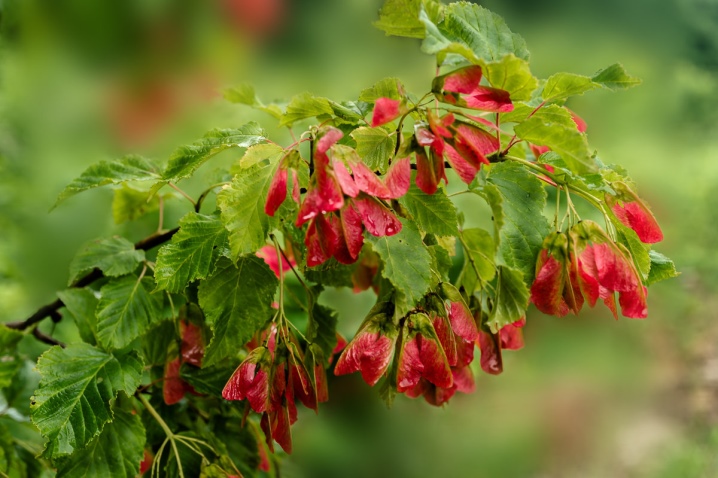
Oval or deltoid leaves 5 to 11 centimeters long and 3 to 7 centimeters wide grow either whole or with 2–5 lobes. Green in spring by autumn, they acquire a bright red color, and then fall off. Pinkish petioles do not exceed 2–5 centimeters in length. When the maple blooms, it is covered with light, richly scented buds, the diameter of which does not go beyond 5-8 millimeters. White-yellow flowers with a reddish tint gather in a dense panicle at the end of the twig. The fruit of the black leaf is a lionfish, consisting of two halves about 2 centimeters long, diverging at an acute angle.
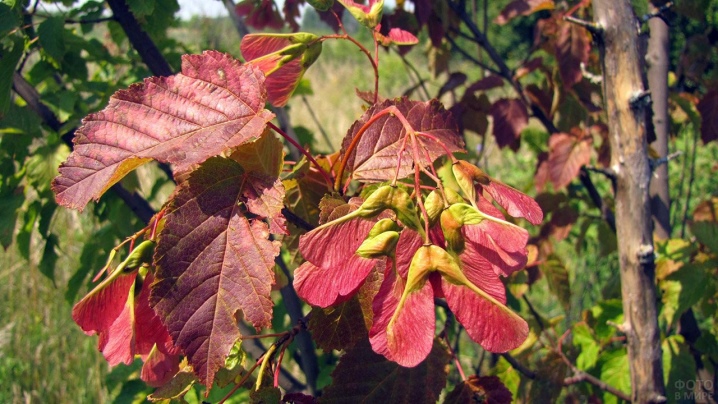
The seeds of the plant ripen in late summer or early autumn, have a brownish-red tint. The convex nut is characterized by a slight elongation.
The diameter of a dense ovoid or spherical crown of a tree can be 6 meters. The root system is highly branched in the upper layers of the soil. This is not to say that the representative of the maple grows quickly, but he is not afraid of drought, urban smog and soil salinity. The plant can reach a height of 10 meters. In its mature state, it is also very resistant to severe frosts. The life span of a plant in favorable conditions is on average 100 years, although some specimens live up to 300. The flowering time of the culture does not go beyond the boundaries of a couple of weeks starting in the second half of May, after opening the leaves.
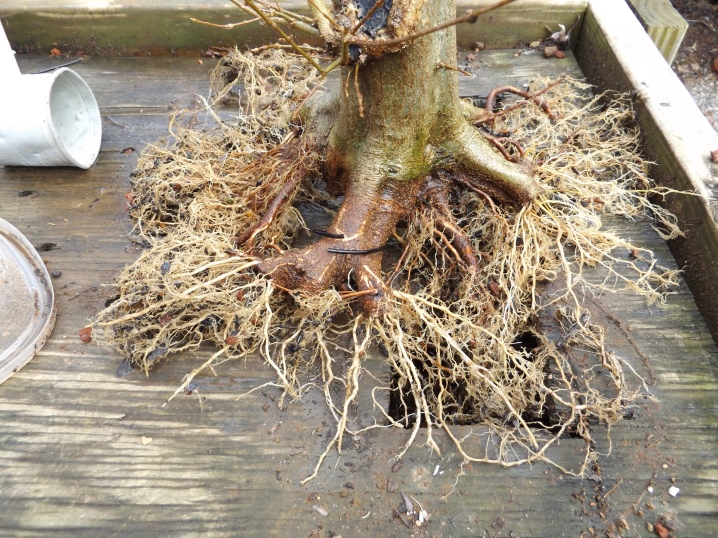
It is interesting that the leaf blades of neklene appear several weeks earlier than those of its "relatives", but flowering, on the contrary, starts much later.
Despite the fact that the crop bears fruit in September, lionfish can remain on the tree almost until the onset of frost.... In nature, the plant propagates by seeds, and on the farm for this purpose, root shoots and layering are increasingly used.
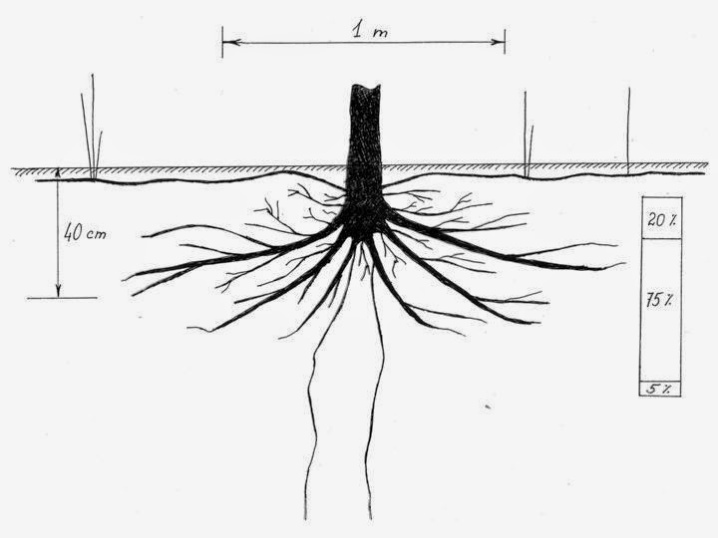
Spreading
Neklen is widespread in Russia, mainly in its European part.... You can meet the plant from Kursk to Saratov, as well as in the North Caucasus and Western Siberia. In addition, the Tatar maple grows in central and eastern Europe, the Balkan Peninsula, Asia Minor, Iran, the mountains of Turkey and Greece, and other parts of the world. Its main habitats are deciduous forests, as well as areas along ravines and river banks. Giving preference to wet places, in the northern part of the world, he gets to the taiga.
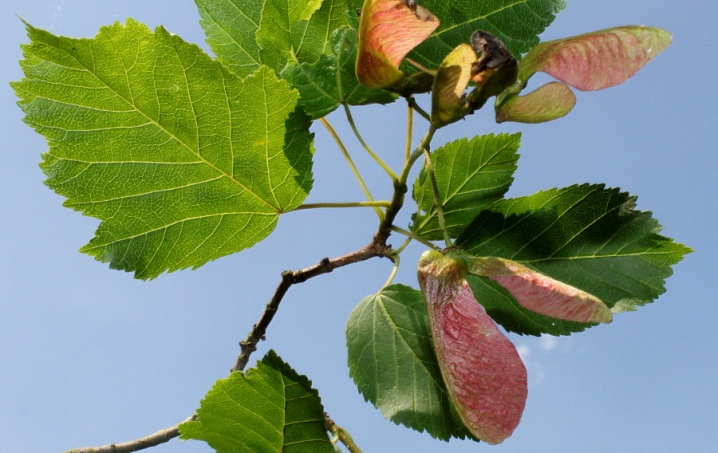
Landing
It is recommended to plant maple in open ground either in early spring, while the buds have not yet hatched, or in late autumn, after waiting for a cold snap and foliage falling. The landing site should be well lit and dry. In principle, the culture can develop in the shade, but the shade of the leaf blades will then fade. It is extremely important that moisture does not stagnate in the selected area, therefore, if the groundwater is located close to the surface, then a drainage system will need to be organized. For this purpose, you can use crushed stone, pebbles or fragments of brick, laid out so as to form a layer 10–20 centimeters thick at the bottom of the recess.
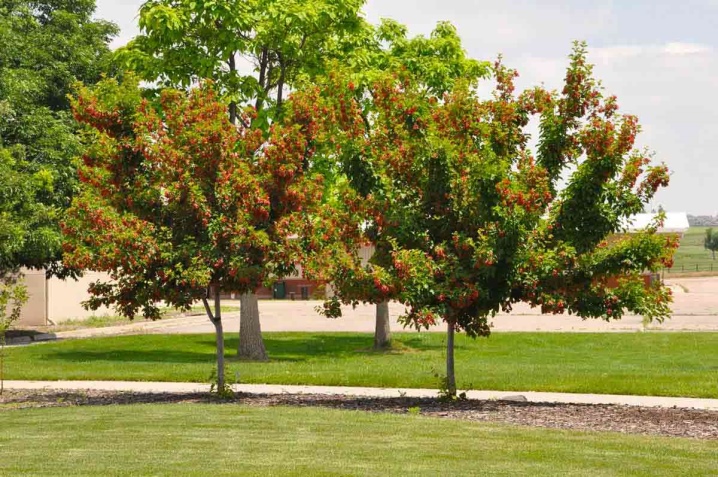
The optimal soil for black tree is a mixture of turf, humus and sand, taken in a ratio of 2 to 3 to 1. The optimum acidity of the earth is between 6.0 and 7.5 pH levels. In case of depletion of the soil, each hole is immediately enriched with 120-150 grams of a nitrate composition, for example, nitroammophos. The seedlings are neatly arranged in holes 50–70 centimeters deep and approximately the same width so that the root collar is not buried. Planting ends with abundant irrigation and mulching of the trunk circle with a thin layer of peat.

It should be mentioned that in the case of spring planting, the soil is prepared in the previous fall.
If the Tatar maple is to become part of the hedge, then between individual copies, you will need to maintain a gap of 1.5-2 meters. With a single planting, the distance between individual trees remains equal to 1.5–2 meters.
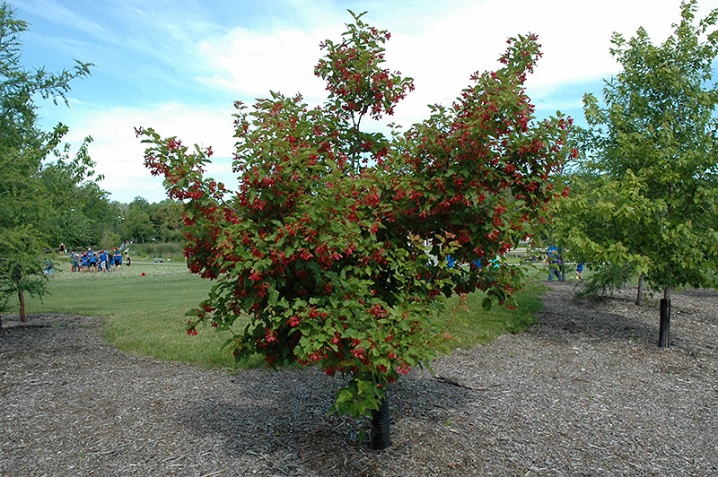
Care
Despite the fact that an adult black man is considered an unpretentious culture, for the first time after planting, it needs regular irrigation... Every day, the gardener will need to pour about 20 liters of water under each seedling and carefully monitor the condition of the soil. The procedure should be accompanied by soil loosening and weeding. In the future, watering the tree is arranged as the earth dries out. Usually, young specimens will need to be irrigated once a week, and mature trees every month. When hot and dry weather is established, the irrigation regime changes, becoming more frequent, and each plant uses up to 10–20 liters of liquid, poured out once a week. Under normal rainfall, the same 10–20 liters are delivered once a month.
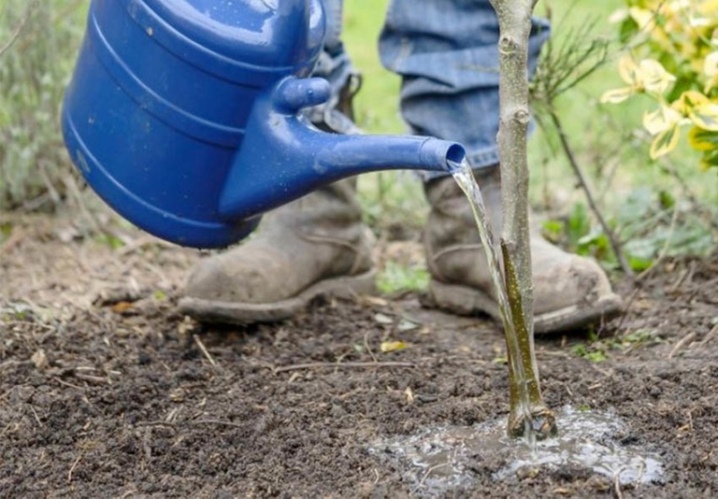
If the culture did not receive the necessary fertilizers during planting, then nutrient supplements are applied later, during watering. For example, in the spring it is proposed to feed the Tatar maple with urea in the amount of 40 grams, potassium salts in the amount of 15-25 grams and 30-50 grams of superphosphate. The specified amount should be enough for 1 square meter of the garden. Summertime culture you will need a complex fertilizer "Kemira Universal", 100 grams of which are distributed over the square meter of the plot. We must not forget about mulching the near-trunk circle with peat or earth, forming a layer 3-5 centimeters high.

Pruning dried branches and forming the crown are carried out either in early spring or late autumn. It should be borne in mind that not only aged or damaged shoots are subject to elimination, but also those that grow in the wrong direction, violating the integrity of the "picture". Since the winter hardiness of young plants is low, before the cold season they are necessarily covered with spruce branches near the root collar. Standard plants should also be protected with burlap for the first couple of years (1-2 layers in the trunk area).
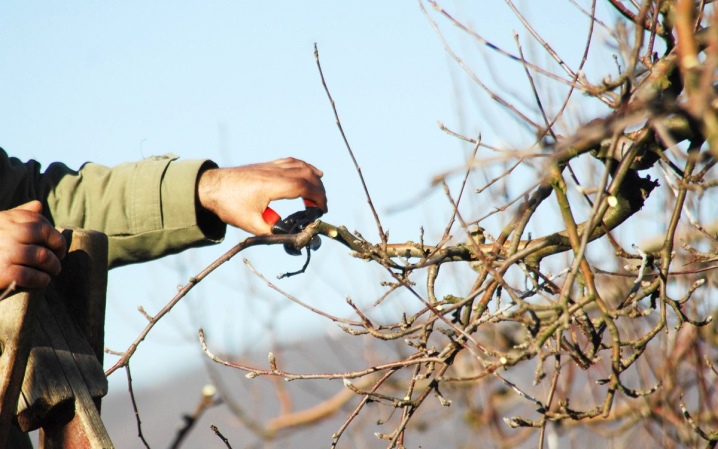
Diseases and pests
Most often, blackened suffers from coral spot... The disease mainly affects tree shoots. Despite the fact that these may be just spots, most often the maple loses its branches, or even completely dies. The damaged parts are immediately cut off, and the resulting wounds are covered with activated charcoal or garden varnish.
To prevent the disease, copper sulfate comes to the rescue, spraying of which is carried out in the spring before the kidneys open.
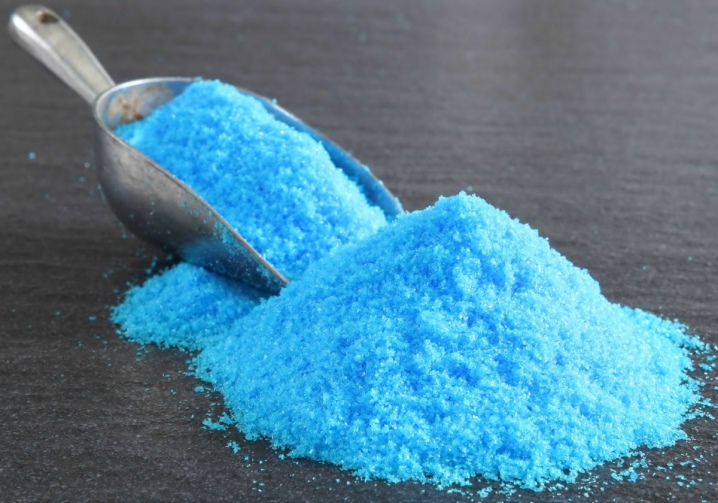
Quite often, the culture is infected with powdery mildew.... The main symptom of the disease is a change in the state of the leaf blades, which dry up and become covered with a white bloom. To prevent the spread of powdery mildew, spraying is carried out with a soap-soda solution, and the leaves are necessarily processed on both sides. The entire prepared composition is consumed at a time so that its beneficial properties do not disappear. If the disease has already hit the culture, then all that remains is to use chemical fungicides.
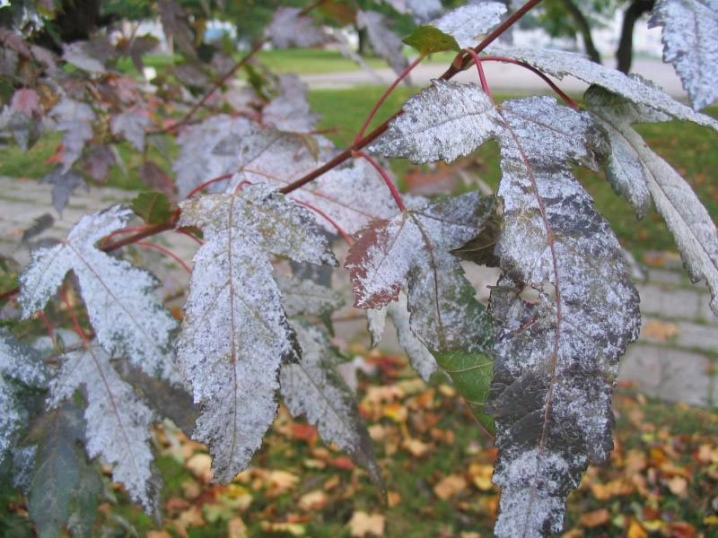
On Tatar maple can be active in different ways fungi, causing deformation of leaf blades or the development of putrefactive processes. Due to the stepped cancer, the bark of the tree is covered with numerous wounds, and due to the mosaic, the leaves first become spotty, and then curl. Finally, necrosis is also characteristic of culture, often leading to the death of the tree. The fight against all these diseases is carried out by applying appropriate fungicides, and prevention necessarily includes regular inspection of the garden and the timely elimination of infected parts of the plant.
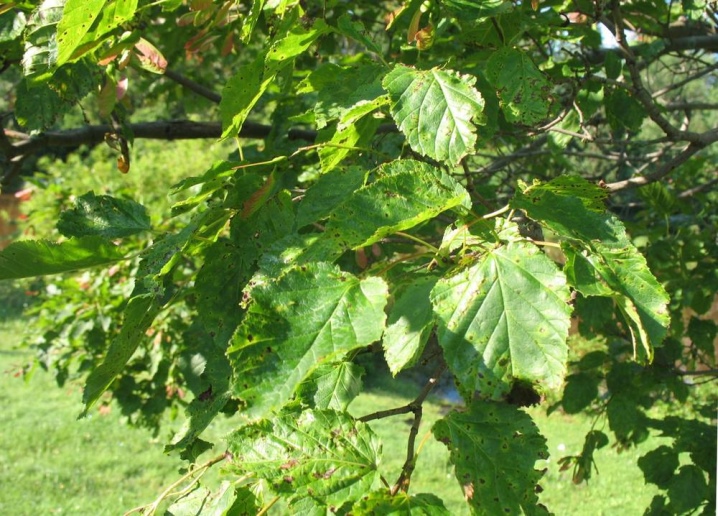
Periodically blackened becomes a target for pests. Sucking insects like aphids, scale insects and scale insects, All juices are “pulled” from the leaves, trunk and branches. Mites disrupt the development of leaf blades, and larvae of nutcrackers damage the roots. Caterpillars and sawflies gnaw on leaves, and some of them also destroy seeds. The fight against all insects is carried out with the help of insecticides.

Application
Tatar maple is not very often used in landscape design, although it can still be found in European gardens and parks, sometimes even in the form of a bonsai. Often its specimens become part of a hedge, including a multi-tiered one. The culture has become much more widespread as a source of minerals and vitamins useful for humans. So, the bark of the tree is used in medicine, and the juice is the basis for the syrup. The resulting nutritional infusion quite successfully strengthens the immune system, prevents the development of periodontal disease, strengthens blood vessels and prevents obesity from developing.
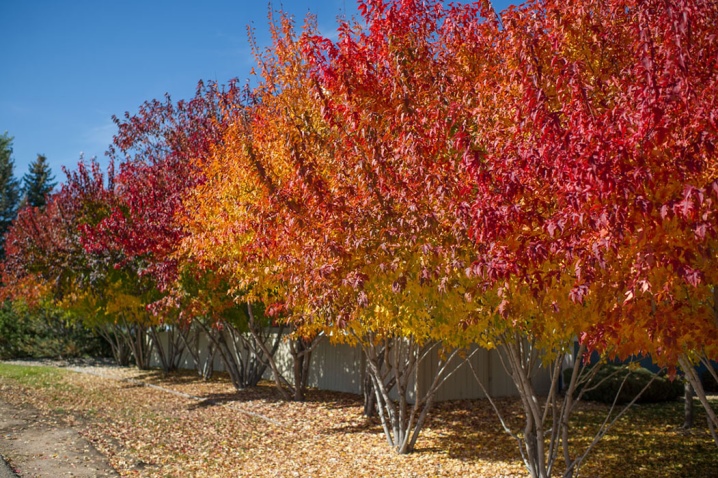
Dried raw materials from bark and leaves help to cope with many diseases, including tuberculosis and pneumonia, and heal wounds.
A representative of the maple family is positioned as a honey plant. Honey, "created" by a tree, has a lot of useful properties, and therefore perfectly supports the body in the off-season and strengthens the nervous system. Tatar maple honey and syrup are also actively used in cosmetology. The wood of this plant is often used in industry for the manufacture of furniture, decoration, musical instruments and small household parts. Since blackened has antibacterial properties and is able to heal wounds, it is used in creating a broom for baths and saunas. A durable and elastic accessory for relaxing procedures with a pleasant aroma, effective intoxication and relaxation of the body.
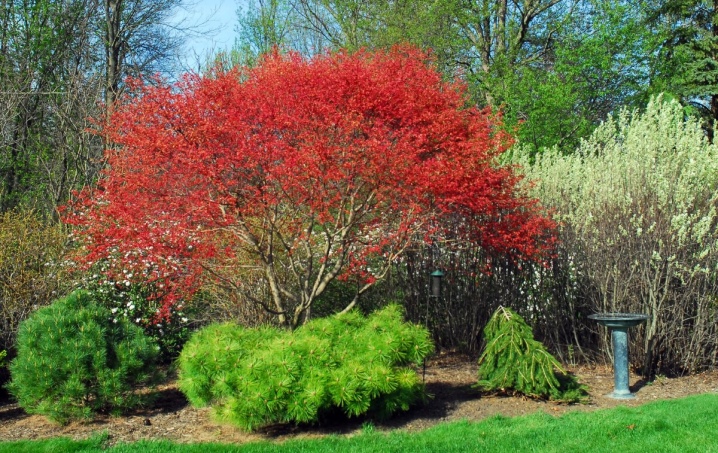
Interesting Facts
The plant got its second name - "blackened" - due to the appearance of its bark: smooth and painted in an almost black shade. As for the "nonlean", here everything is explained by the shape of the leaf blades. Whole, egg-like, not exceeding 6-10 centimeters in length, decorated with large denticles along the edge - they are not very typical for the maple family.




































































The comment was sent successfully.